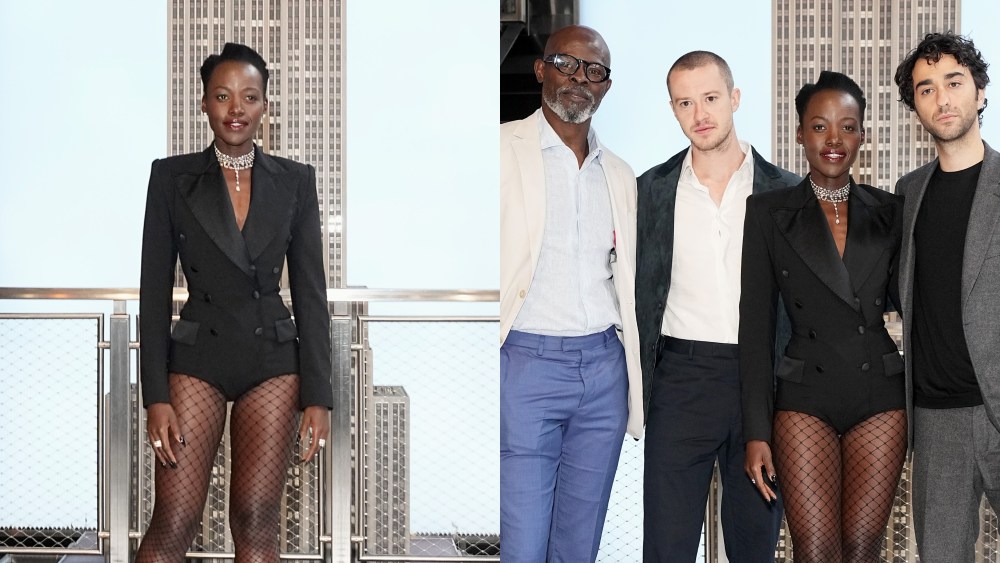
Despite all the hubbub and hand-wringing, the holiday rush is second nature in retail — the industry thrives on the energy, the sales, the overwhelming nature of what is a high-wire act that could make or break the year.
But even if it’s a familiar sprint into the end of the year, every holiday season brings a little something new.
This year, that something new is artificially intelligent.
AI has been ingratiating itself to the fashion retail industry for years and is still very much a work in progress, even as more of the pieces have started to click into place lately.
You May Also Like
The tentative Gen AI experiments and machine learning pilot programs have evolved rapidly over the past year and are getting their first big test this season.
“This holiday season is interesting, kind of AI’s first holiday,” said Dr. Rebecca Homkes, a consultant and high-growth strategy specialist who’s been helping chief executive officers think about how to use the rapidly advancing technology.
“We’ve had AI for decades, but in ‘22 and ‘23 people were really just playing around,” Homkes said. “This is the first [holiday season] where companies have had a full strategy cycle to kind of incorporate it into what they are doing.”
The result so far? Mixed.
“Very, very few companies are nailing it,” Homkes said. “There’s no such thing as an AI strategy. This is what’s holding a bunch of companies back. They’re trying to develop the perfect AI strategy and there’s no such thing. The role of AI is to enable support and accelerate your value-creating strategy. So if you are confused on value creation … AI cannot help you this holiday season.”
For companies that do have a handle on their customer and how they go to market with their value proposition, Homkes said AI can work some magic.
“The best AI is personalized, it’s customized,” she said. “It says, ‘Hey, I know you as a shopper, I know what you want in your cart,’ and ‘Hey, you might’ve missed something in your cart.’ That’s where we’re seeing some brands make some progress, but it’s choppy. It’s a little bit haphazard still.”
Homkes said executives are taking AI seriously and are using it to help workers be more productive while moving toward a footing that will let AI help transform processes or invent new ones.
That’s the next turn of the wheel.
In the meantime, people are getting smarter along with their machines.
“One of the most powerful things AI can do is shorten learning time, which brings more agility, which brings more value creation, which brings more growth,” she said. “And the organizations that are using it for that are the ones who are getting the bigger unlocks.”
The world is still very much on the steep part of the AI learning curve.
Even Amazon, which rolled out a bunch of new initiatives in the area this week, including a big new supercomputer, is still working on figuring things out.
“We have a new shopping assistant called Rufus,” said Jenny Freshwater, leader of the Amazon Fashion business, in a Cyber Monday interview. “You can get to it through the colorful bubbles at the bottom of the app, and you can type in any question like, ‘gift idea for a 17-year-old who likes sports’ and it’ll come back with shopping guides.”
Rufus launched earlier this year and is already fielding millions of questions each week, getting better along the way.
“We’ll learn a lot through this holiday period,” Freshwater said of Rufus. “We didn’t have it last year. The holiday period is always different in terms of how customers think and shop. And so I think we’re going to learn a ton more.”
Many retailers that don’t have the tech savvy of Amazon might well learn that they don’t have the systems and structures to make any light-speed jumps into the future.
Chad Shuford, a partner at the Silicon Foundry advisory firm, said, “While this season serves as a pivotal testing ground for enterprise AI tools, their material impact remains uneven as retailers contend with data silos, operational complexities, and the challenge of delivering real-time, scalable personalization.”
But the breadth of AI activity in retail is just boggling.
Shuford pointed to retail efforts to get smarter with real-time inventory management, predictive analytics, personalized marketing, product recommendations, dynamic pricing and promotions.
And there’s plenty more AI in the works, from distribution centers to home offices.
Already it’s doing what could be considered very human work, churning out advertising copy and standing in as virtual fashion models.
Barcelona-based Mango caused a stir in July with an advertising campaign that was generated entirely using AI tools although the company’s design, art and styling and photography departments all worked on the campaign.
Jordi Alex, chief information technology officer at Mango, said at the time: “Artificial intelligence is a technological revolution that presents great opportunities that should act as a co-pilot to extend the capabilities of our employees and further amplify our creativity. Because technology will either make us more human or it won’t.”
The many qualms and worries about AI will have to be addressed sooner rather than later as it is a peculiarly useful technology that is now out in the wild.
Unlike the metaverse, which is simmering on the back burner, AI has broad-based, real world appeal now to businesses and is growing everywhere and all at once. So as Nike’s digital sneaker unit Rtfkt winds down and evolves into “an artifact of cultural revolution,” AI is starting to hit its stride.
Aside from Amazon, the retail-cum-tech giant Walmart is probably best positioned to take advantage of the moment given its scale, resources and inclination to lean in.
The discount retailer, for instance, has had its own personal shopping assistant in beta for about five months.
“We’re seeing early tangible results from the deployment of generative AI,” Walmart chief executive officer Doug McMillon crowed to investors last month.
“I’m a little hesitant to talk about AI, because I know someone will hear this in the months and years to come and chuckle about how old school it sounds, given how fast things are changing,” McMillon said. “But it’s important to convey that we’re learning and applying generative AI, AI and machine learning to solve the practical opportunities right in front of us.
“Our data sets are valuable, and we’re learning to put them to work to improve the customer and member experience and assist our associates as they do their daily work,” he said. “We’re racing to improve all the things that people love about shopping and remove or diminish all the things they don’t.”
That’s a big goal, really the standing order for retailers everywhere. Maybe fashion can get a little closer to it with some high-tech help, assuming the robots don’t take over.
The Bottom Line is a business analysis column written by Evan Clark, deputy managing editor, who has covered the fashion industry since 2000. It appears every other Thursday.



